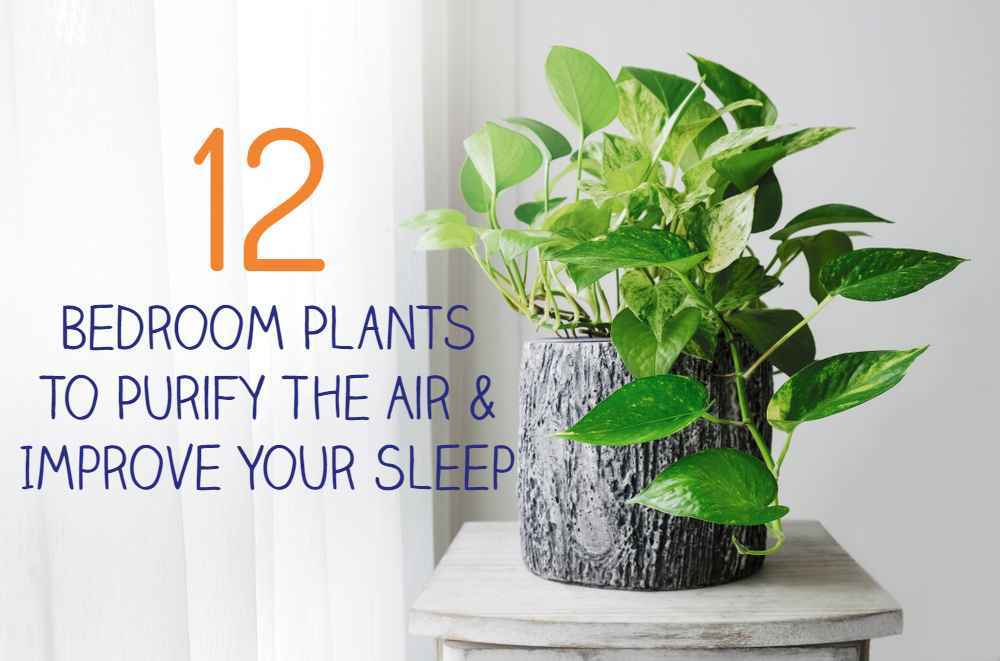
There’s nothing worse than tossing and turning all night, before being awoken by the sound of your alarm clock just minutes after you finally manage to nod off! These sleepless nights can take their toll on our energy, productivity, mood and overall quality of life.
One way to ensure a better quality of sleep is to fill your home with beautiful flowers and plants. Not only do they look great and bring vitality and life to your living spaces, but they can have fantastic relaxing and purifying benefits – which in turn can promote a healthy sleeping pattern.
With stress and anxiety causing half of all insomnia issues, it’s a good idea to fill your home and bedroom with a variety of plants that have a calming effect. After all, studies clearly show that spending time in nature reduces stress levels, so why not simply bring nature indoors?
In addition, poor air quality from pollution, odors and molds can impact our breathing, thus making a good night’s sleep seem next to impossible. The good news is there are a variety of plants that can purify the air while you sleep – in fact NASA did a whole study on it!
We’ve compiled this list of 12 great plants to help you sleep better, based on their calming and cleansing effects:
Jasmine
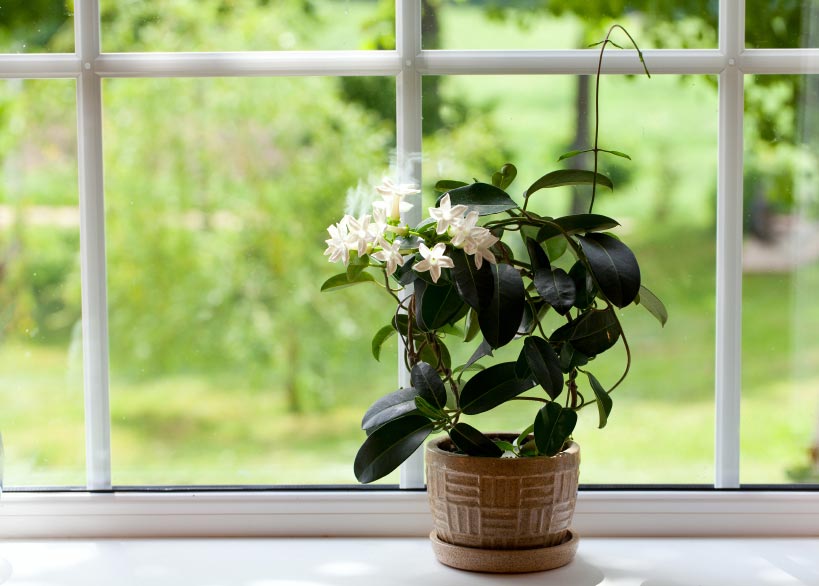
This exotic plant has a gentle, soothing effect on the body and mind. It has been shown in one study to reduce anxiety levels, leading to a greater quality of sleep.
Not only that, but this research suggests that the positive effects of such a high quality sleep lead you enjoy increased alertness and productivity during the day.
With such beautiful pink or ivory blossoms, there seem to be no downsides to adding a Jasmine bloom to your boudoir!
This six pack of jasmine plants from 9GreenBox and available on Amazon is perfect for growing indoors and means you can place a jasmine plant in every bedroom and have spare plants for other rooms in your house – or even in your garden.
Lavender
Who doesn’t love the scent of lavender? It’s also probably the most well-known of all plants when it comes to inducing sleep and reducing anxiety levels. Research backs up these claims, with lavender scents shown to slow down heart rate, lower blood pressure and levels of stress.
In one study, the smell of lavender reduced crying in babies, sending them into a deeper sleep; while simultaneously reducing stress in both mother and child – something all new mothers will be happy to hear!
In women, lavender has been shown to increase light sleep, and decrease rapid-eye movement (REM) sleep and the amount of time to wake after first falling asleep, with opposite effects in men.
While there are a host of lavender scented products on the market to help you get a full night’s rest (from scented sleep masks to lavender mattresses) why not go for the most natural and cost effective option – a beautiful lavender plant placed on your nightstand.
Want to try a lavender plant in your room? This complete lavender grow kit is perfect for growing indoors – coming with a terra cotta pot, lavender seeds and a potting mix. Get it here.
Snake Plant (Mother-in-Law’s Tongue)
One of the most recommended plants for improving indoor air quality, the Snake Plant is a hardy and easy to care-for plant … always a plus!
What’s great about this plant is that it emits oxygen at night time whilst simultaneously taking in carbon dioxide – something we naturally produce when breathing. All this leads to a purer quality of air and a better night’s sleep.
The Snake Plant also filters some nasty but common household toxins (namely formaldehyde, trichloroethylene and benzene) from the air.
Want to try a snake plant or two in your room? Try this set of three impossible-to-kill snake plants from JM Bamboo on Amazon.
Aloe Vera
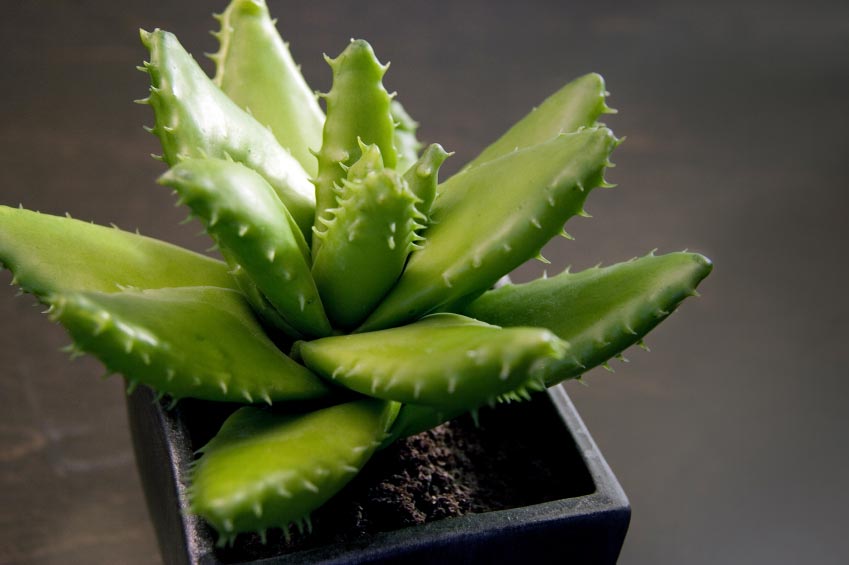
Listed as one of NASA’s top air-improving plants, the fantastic Aloe works much like the Snake Plant – it emits oxygen at night, making for a more restful slumber. It’s also one of the easiest plants to grow and maintain – it tolerates ‘neglect’ well and so doesn’t require frequent watering.
Dubbed the ‘plant of immortality’ by the Egyptians, it reproduces easily so if you buy one you’ll soon have an Aloe plant for all the rooms in your house. You can even pass on the gift of happy sleep to your family and friends! Keep it on your bedroom window as it does need a lot of direct sunlight.
You can also use the gel from the Aloe Vera leaves as a topical treatment for minor cuts and burns, insect bites, dry skin and lots more! It’s simply a must-have plant in every home.
If you’d like to enjoy the benefits of an Aloe Vera plant in your bedroom, then try this two pack of live Aloe Vera plants from Costa Farms available on Amazon.
Further Reading: 10 Reasons Every Home Should Have An Aloe Vera Plant
Gardenia
With glossy evergreen leaves and beautifully scented blossoms, Gardenias are a popular plant choice for bedrooms. Studies indicate that keeping one in your room may help you achieve a better quality of sleep, with claims that it may be as effective as Valium in relieving anxiety and promoting sleep.
However, gardenias can be tricky to maintain as they require a lot of attention in order to keep their luscious leaves and delicate flowers. Indoor gardenias should be kept in a bright room, but not placed in direct sunlight. But if you suffer with insomnia or anxiety, investing a little time in one of these beautiful blooms could be a cheap and healthier solution to getting a good nights rest!
Try Gardenia for yourself with this beautiful live Gardenia plant in a birch bark container.
Spider Plant

Not to be confused with the Snake Plant, the Spider Plant is also a champion cleanser of air. The NASA tests showed it to remove around 90% of the potentially cancer-causing chemical formaldehyde from the air. Since formaldehyde is found in common household products like adhesives, grout and fillers, it’s a good idea to keep one of these plants around.
In addition to cleansing the air, it will also absorb odors and fumes as well as sustaining oxygen levels in the room, promoting better sleep.
Spider plants are relatively cheap and you can pick up a set of three spider plants from JM Bamboo at this page on Amazon.
Valerian
The Valerian is a perennial flowering plant with sweetly scented pink or white flowers that bloom in the summer.
While the blossoms were used as a perfume in the 16th century, the root has been used as a tea or tincture since ancient times, with Roman physician and philosopher Galen prescribing it for insomnia. Newer research has shown that Galen was right in his prescription of Valerian Root – simply inhaling its scent will help you fall asleep quickly, and will ensure you enjoy a better quality of slumber.
In addition to keeping one on your bedroom window (it needs full sun for 6 hours a day), why not add a few of the petals to your bathwater to help you drift off?
English Ivy
Another one of NASA’s top plants for purifying the air, English Ivy is simple to grow and only needs moderate exposure to sunlight.
Studies have shown that this leaf can improve symptoms of allergies or asthma – which all sufferers know can seriously impact both the quantity and quality of sleep. The American College of Allergy, Asthma & Immunology reported that, in a 2005 experiment, English Ivy removed 94% of airborne feces and 78% of airborne mold in just 12 hours! As mold can affect our breathing, it’s definitely a plant to have on hand for a great night’s sleep.
This evergreen vine looks great in an indoor hanging basket, or placed on a ledge where the leaves can trail down. It’s toxic to kids and pets though, so make sure to keep it out of reach!
Peace Lily

Not just pleasing to the eye, the Peace Lily is another of NASA’s superstar plants, helping to filter out harmful benzene, trichloroethylene, and formaldehyde toxins.
The moisture given off by these striking flowers can boost a room’s humidity by up to 5%. This suppresses airborne microbes which can lead to allergies, and also helps relieve those irritating dry noses and throats that keep you awake all night.
A nice shady position (out of the reach of pets and children) and weekly watering is all the Peace Lily needs – that’s not too much to ask in return for a great night’s sleep.
This beautiful Peace Lily plant from Costa Farms available on Amazon comes in a stylish ceramic planter.
Bamboo Palm
Also known as a Reed Palm, this small plant is a fantastic air purifier. Ditch your chemical-laden air fresheners in favor of a few of these pretty palms and say goodbye to airborne smells and toxins.
Not only will you be able to enjoy your home’s pure, fresh air during the day, but you’ll enjoy a fantastic night’s sleep too.
Given its exotic origins, the Bamboo Palm will bring a tropical, warm feel to your bedroom. It’s fairly easy to care for – just keep the soil moist (but not wet) and place the plant in indirect sunlight.
Gerbera Daisies
These bright and cheerful flowers couldn’t help but put you in a good mood! With pink, orange, yellow and white, they should be a welcome addition to any room – and not just because they look good.
They also release oxygen at night, which helps you breathe easy while you snooze. If you suffer from apnea or allergies, then these daisies are definitely recommended.
A word of warning to the novice gardener – as they are prone to fungal diseases Gerbera Daisies need extra special attention, particularly in relation to watering and light levels.
Golden Pothos
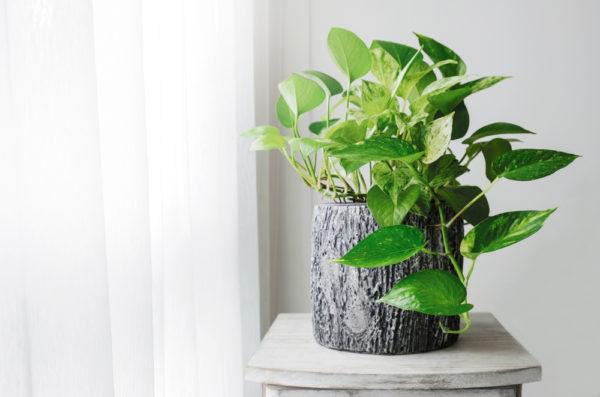
With its marbled, heart-shaped leaves, the Golden Pothos is another exceptional air purifying plant according to NASA.
Those with a busy schedule will particularly welcome this ivy-like vine. Not only will you have a better quality of sleep but you need not worry too much about nurturing it – a couple of hours of morning sun and a little water once a week is all it requires.
It makes a great hanging plant too – which curbs its invasive nature and keeps its mildly toxic leaves out of the reach of pets and children.
If Golden Pothos is the sleep-inducing plant for you, then this live indoor plant from Costa Farms is for you.
When Adding Plants to Your Home:
- Always check if they are toxic to children and animals to ensure they are suitable for your family.
- Remember to wipe the leaves every week or so to ensure the plants can effectively do their job – just look at it as the equivalent of changing the filter in your air purifier!
- Choose a good mix of those that purify the air and those that induce sleep through their scent for optimum results.
- NASA recommend between 15 and 18 air-purifying plants in an 1800 square foot home, with a few of these in each bedroom.
- Make sure you aren’t making these mistakes that are killing your houseplants.
- Feed your houseplants with a high quality organic fertilizer to improve growth, increase disease resistance and bigger blooms. These Earth Pods Fertilizer Capsules are brilliant organic fertilizers for houseplants. You simply pop one of the capsules into the plant mix near the stem and it breaks down and slow releases right into the roots.
Pin This For Later
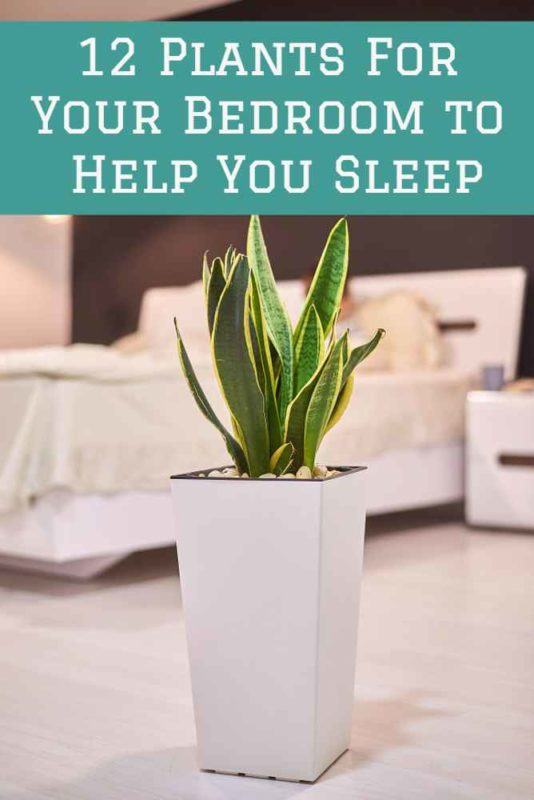
More Houseplant Goodness…
Houseplants are enjoying a bit of a movement right now and we have you covered no matter what room you want to fill with houseplants. Here is some of our most popular indoor plant content to help you build your own collection of beautiful and functional greenery.
16 Houseplants That Thrive In Your Bathroom – A bathroom can be a dark, humid room not conducive to growing plants. These plants thrive in bathroom conditions and can add a pop of greenery to the room that needs it most!
15 Best Smelling Houseplants To Perfume Your Home – If you want your indoor plants to add both beauty and aroma, then this list is for you.
22 Practically Immortal Houseplants That Even You Can’t Kill – Do you have a black thumb? Does every plant you care for wither and die? Then this list is for you. No matter how bad you are at gardening, even you can keep these plants alive!
15 Things You Are Doing That’s Killing Your Houseplants – If every plant you touch self destructs, then perhaps you are making one of these common mistakes.
